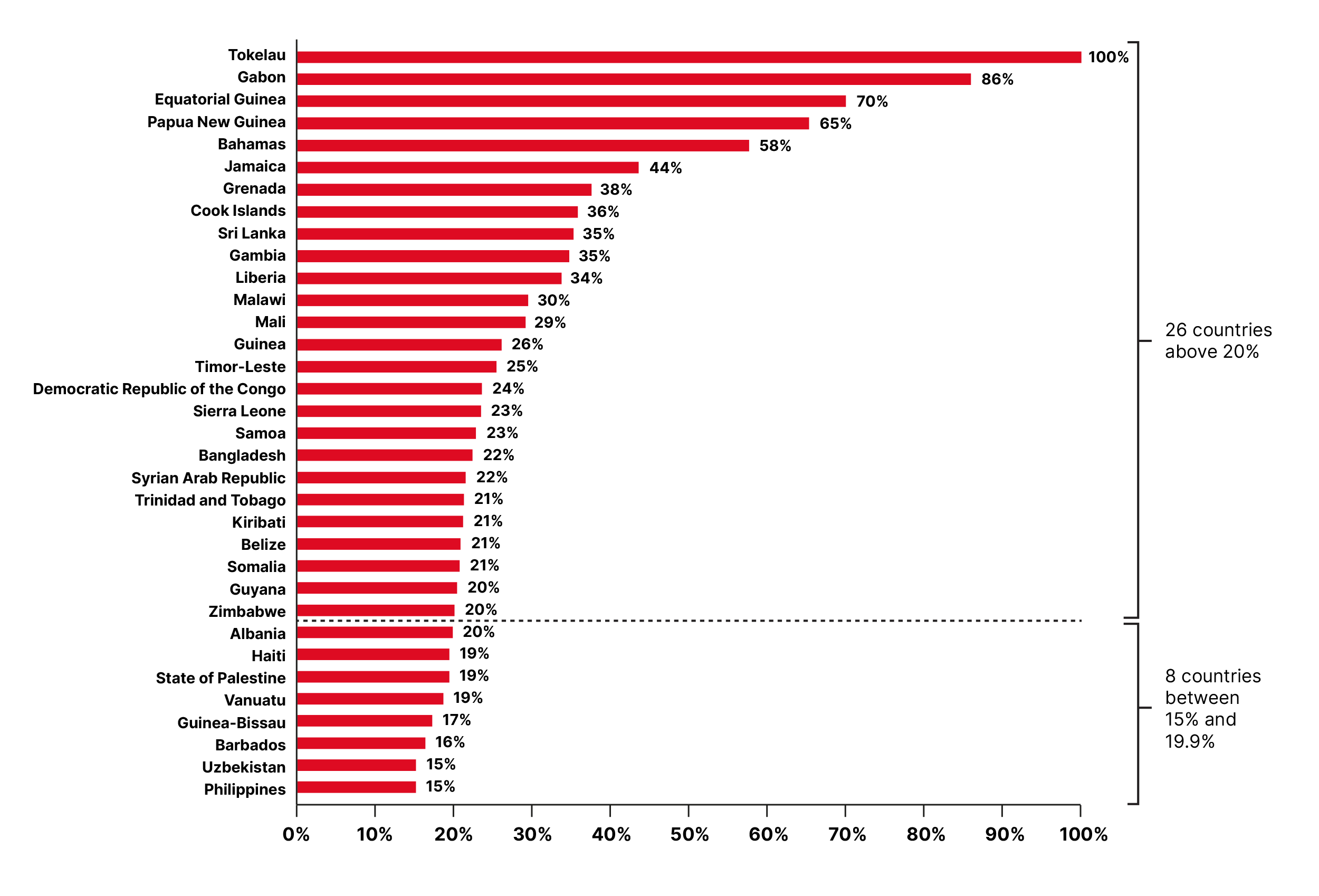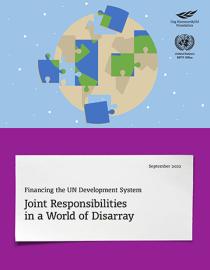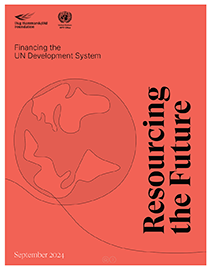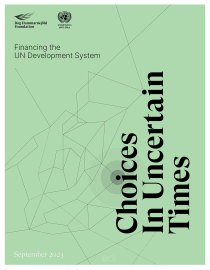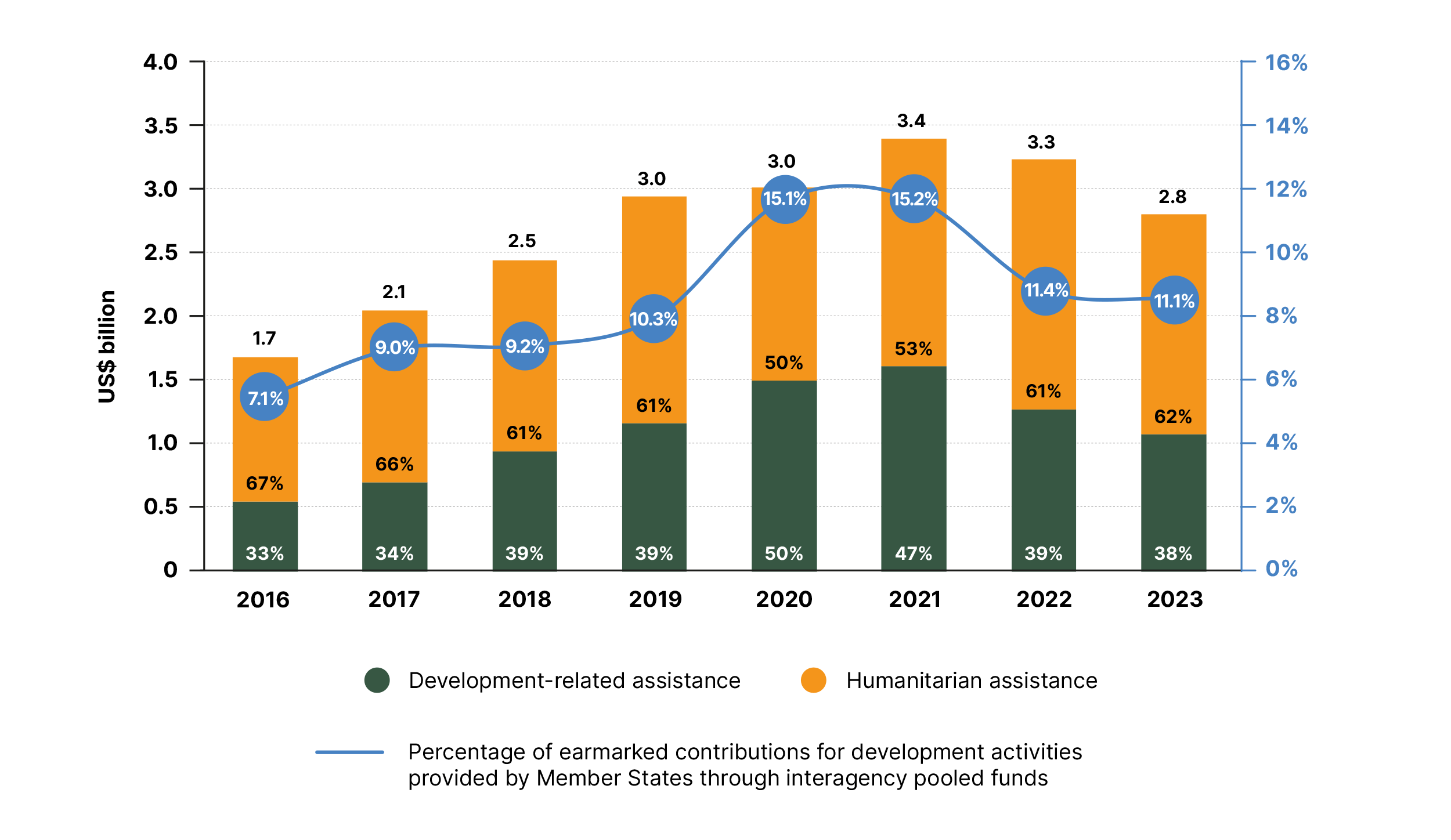
News & MediaFinancing the UNDS
The following section includes data and analyses adapted from the report "Financing the UN Development System", which is annually prepared by the UN Multi-Partner Trust Fund Office and Dag Hammarskjöld Foundation. |
|---|
UN inter-agency pooled funds strengthen coherence and coordination within UNDS entities, serving as a platform for giving voice and visibility to key stakeholders – from donors to implementing civil society organisations. These funds support multi-stakeholder partnerships involving a specific thematic and/or geographic focus. Funds may address broad global or regional cross-border challenges through multi-partner trust funds (MPTFs), or more specific national concerns through country-level MPTFs or standalone pass-through joint programmes.
At a country level, multi-stakeholder collaboration enables various partnerships to coalesce under a common results framework, thereby fostering implementation of national development plans and facilitating programmatic funding across various in-country priorities. When utilised to finance a country-level United Nations Sustainable Development Cooperation Framework (UNSDCF)20, inter-agency pooled funds serve as ‘core-like’ resources capable of supporting a wider results framework while providing scope for flexibility.
UN inter-agency pooled funds constituted 5% of total earmarked contributions to the UN system in 2023. Prior to that, total contributions doubled from US$ 1.7 billion in 2016 to a peak of US$ 3.4 billion in 2021, reflecting increased demand for pooled funding services in support of joint UN action on SDG implementation, along with the COVID-19 response, peacebuilding and climate action. However, contributions decreased to US$ 3.3 billion in 2022, and then to US$ 2.8 billion in 2023, as shifting geopolitical dynamics led to resources being redirected away from multilateral humanitarian and development assistance.
Figure 1. includes a line indicating the share of earmarked contributions for development activities provided by Member States through UN inter-agency pooled funds – one of the indicators established under the 2024 Funding Compact.37 In 2023, it stood at 11.1%, against a 2027 target of 30%. In 2023, according to the definition provided by the 2019 Funding Compact indicator, the total volume of earmarked contributions for development-related activities channeled through UN inter-agency pooled funds amounted to US$ 1.1 billion, or 8.1% of total earmarked contributions for development assistance, of which US$ 914 million (6.8%) were provided by Member States and US$ 168 million (1.3%) by the EU and non-government donors. This highlights the importance of broadening donor engagement and reinforcing multilateral funding commitments to meet future targets.
|
Total contributions doubled from US$ 1.7 billion in 2016 to a peak of US$ 3.4 billion in 2021, reflecting increased demand for pooled funding services. |
Figure 1. Contributions to UN inter-agency pooled funds 2016–2023 (US$ billion)

Who are the main contributors to pooled funds?
Figure 2. highlights the top donors’ total contributions in absolute terms, reflecting volume-based leadership. The 2024 Funding Compact commits Member States to providing 30% of noncore contributions for development activities through UN inter-agency pooled funds by 2027. Four Member States have already fulfilled this commitment according to 2023 figures: Finland, Lithuania, Ireland and Norway. Meanwhile, Liechtenstein, the United Kingdom, Netherlands and New Zealand have all surpassed the 25% mark.
Figure 2. Contributions to UN inter-agency pooled funds: Topbcontributors, 2023 (US$ million)
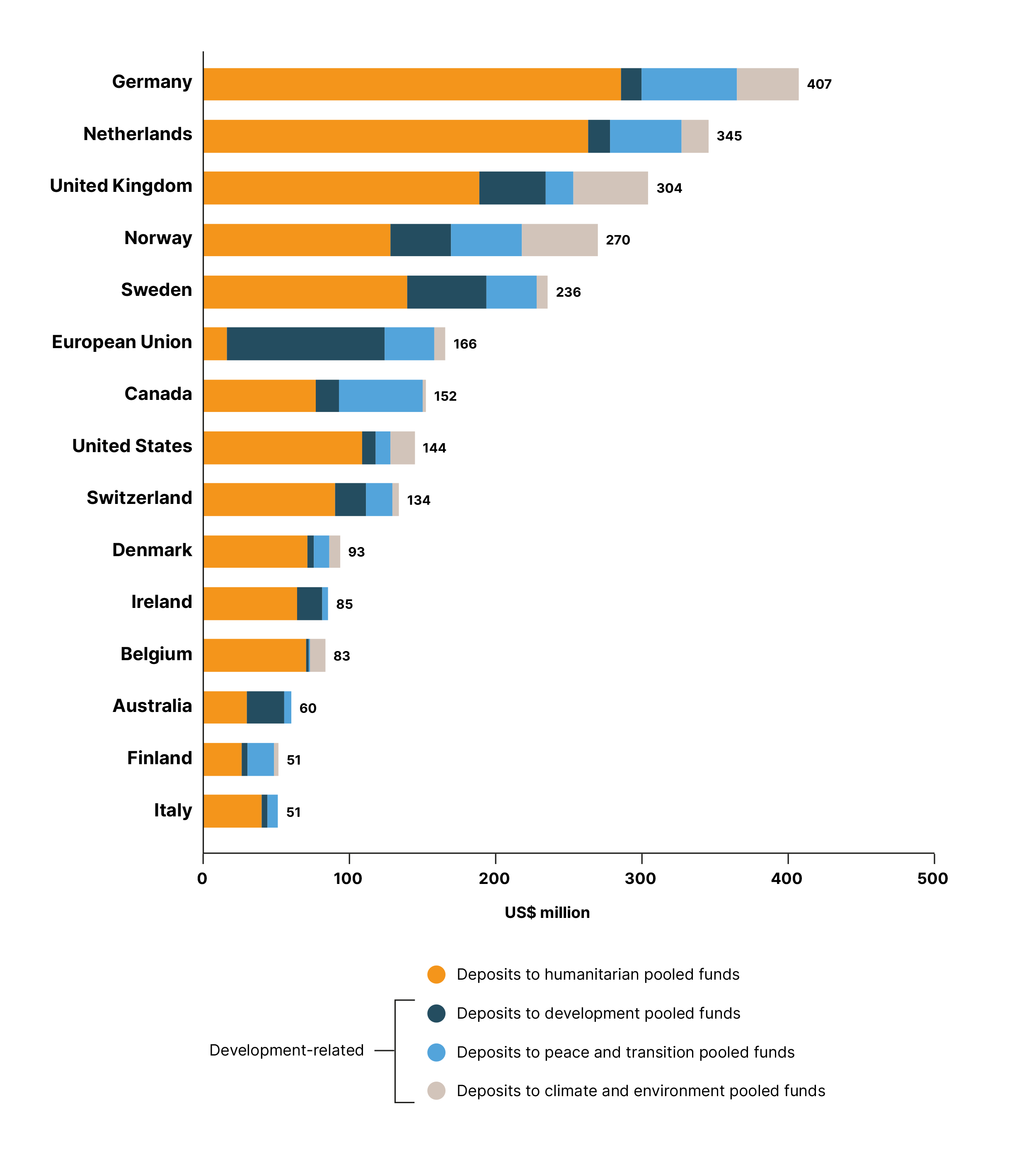
The 15 top contributors in 2023 were responsible for 80% of these contributions. Germany, the top contributor, provided US$ 407 million across all fund categories, of which more than 25% went to CERF (US$ 107 million). The next two countries, the Netherlands and the United Kingdom, provided US$ 345 million and US$ 304 million respectively. Combined, these three donors accounted for over a third of UN inter-agency pooled funding received in 2023, reflecting their leadership in advancing flexible, collaborative financing.
|
|
The 15 top contributors in 2023 were responsible for 80% of these contributions. |
Figure 3. showcases Member States with a more than 10% share of earmarked contributions for development activities channeled through UN inter-agency pooled funds. The 2024 Funding Compact commits Member States to providing 30% of noncore contributions for development activities through UN inter-agency pooled funds by 2027. Four Member States have already fulfilled this commitment according to 2023 figures: Finland, Lithuania, Ireland and Norway. Meanwhile, Liechtenstein, the United Kingdom, Netherlands and New Zealand have all surpassed the 25% mark.
|
Member State commitments set out in the new Funding Compact is to provide 30% of non-core contributions for development activities through inter-agency pooled funds by 2027. |
Figure 3. Countries contributing over 10% of their total earmarked funding to the UN development assistance through UN inter-agency pooled funds, 2023
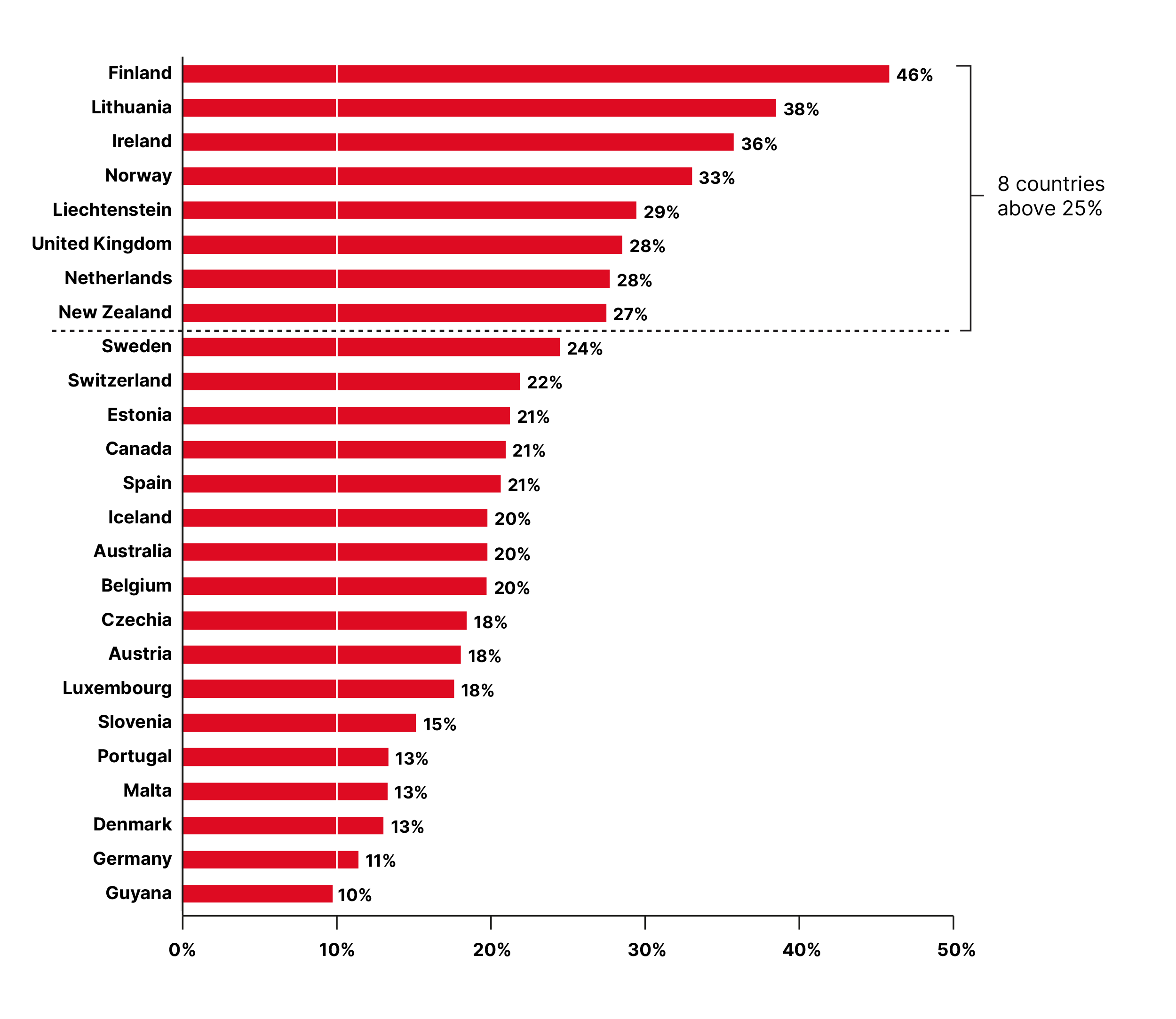
Which are the main implementing UN entities?
Figure 4. Top implementing UN entities received resources through UN inter-agency pooled funds, by thematic area
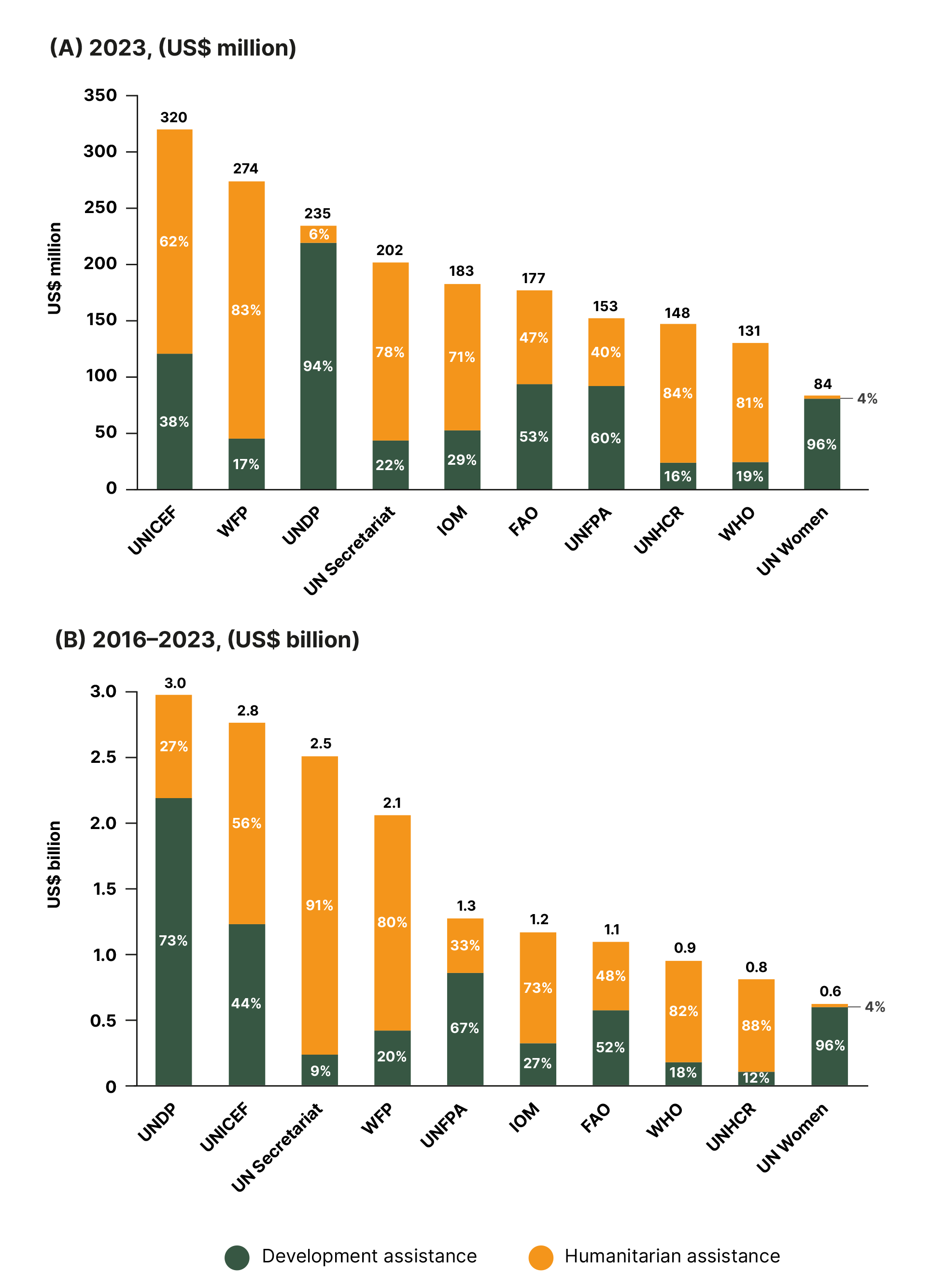
In which countries do inter-agency pooled funds contribute to development results?
Figure 5. A growing number of countries are benefitting from UN inter-agency pooled funds. Tokelau, Gabon and Equatorial Guinea stood out in 2023, with more than 70% of their UN earmarked development expenses channeled through UN inter-agency pooled funds.43 In Tokelau’s case, funding was provided through the Joint SDG Fund; for Gabon, primarily through CAFI; and for Equatorial Guinea, through the Equatorial Guinea MPTF. All three funds are administered by the MPTF Office.
Figure 5. Countries or areas where more than 15% of earmarked resources is channeled through development-related UN inter-agency pooled funds, 2023
